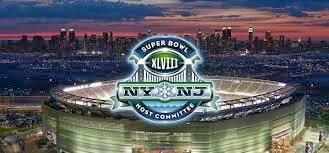According to Super Bowl advertiser playbooks, brands are all wishing for ads that score big: big audiences, big creative, big buzz, and big emotional engagement. Well, all advertisers can count on at least two of those wishes to come true, because the Super Bowl has long been a showcase of big creative and it always attracts big audiences. Usually around 160 million viewers. More, depending on the teams that reach the title game. Remember the game?
Ultimately all advertising should be judged not just how an ad entertains, but how it performs off the field – in the marketplace arena. Does the ad engage and build the brand? Does it build a brand defense against competition? Does it engage enough to drive sales? That’s how brands really keep score. Super Bowl advertisers are already guaranteed awareness in a game known as much for the payers as it is for the players. Viewers go out for a pizza or beer run during the game, so they don’t miss the ads, and this year that costs around $134,000 per second. Brands that can afford that aren’t usually in contention for an awareness trophy.To find out which of the 29 brands reported in the press to be Super Bowl advertisers are going to rack up big numbers on the engagement scoreboard on February 2nd, Brand Keys conducted its annual Super Bowl Engagement Survey, polling a national sample of 1,660 men and women who indicated they were going to watch the big game, and measured to what degree advertiser brand values were influenced by appearing on the Super Bowl.
In this instance you need more than a 2-point conversion to ensure an engagement touchdown. Advertisers are classified, as “winners” (scoring 5 or more points, an engagement touchdown), “losers” (getting sacked and ending up losing 5 or more engagement points), and brand “draws” (where engagement ratings are left unaffected, a kind of very expensive advertising version of “no harm, no foul.”) Here are this year’s results:
|
WINNERS
|
DRAWS
|
LOSERS
|
|
|
Doritos +13
|
Pepsi +9
|
Budweiser
|
Jaguar -5
|
|
Coca Cola +12
|
Butterfingers +8
|
Cheerios
|
Dannon -6
|
|
Hyundai +11
|
Wonderful Pistachios +8
|
Chrysler
|
H&M -8
|
|
M&M’s +11
|
SodaStream +7
|
GM
|
Oikos -8
|
|
Axe +10
|
Toyota +6
|
KIA
|
Volkswagen -8
|
|
GoDaddy +10
|
Audi +5
|
Squarespace -9
|
|
|
Heinz +9
|
TurboTax -10
|
||
|
Old Spice +9
|
Intuit -12
|
||
And as much fun as it is watching and chitchatting about Super Bowl ads, push-to-shove, in their heart-of-hearts, but particularly on their bottom lines, all clients want more than just knowing they were seen and/or buzzed, twittered, emailed, texted, posted, Facebooked or Pinterested about. Yes, yes, we know, Monday-morning creative quarterbacking is interesting, talk is generated, social networks tracked and percentages of ad “discussion” calculated and reported, numbers of GIFs tallied, and all that’s fine, but it’s not enough. Or shouldn’t be. With 30-second spots selling for $4 million this year (plus mind-bogglingly high production costs), it should be a whole new game plan when it comes to ad effectiveness and ROI. It’s nice to entertain, but it’s always more profitable if you engage. Some brands are able to do both, but it’s always a lot harder than just casting celebrities, cute kids, or a Clydesdale colt in your ad.
Given that this is the Super Bowl we’re talking about, we’ll close with this thought that might be worth for advertisers to remember: There is no ‘I’ in ‘team,’ but there is one in ‘Return-On-Investment.’
Connect with Robert on LinkedIn.
Find out more about what makes customer loyalty happen and how Brand Keys metrics is able to predict future consumer behavior: brandkeys.com. Visit our YouTube channel to learn more about Brand Keys methodology, applications and case studies.
Share this:

